解题思路:
算法流程: 设定
i,j两指针分别指向num1,num2尾部,模拟人工加法;- 计算进位: 计算
carry = tmp // 10,代表当前位相加是否产生进位; - 添加当前位: 计算
tmp = n1 + n2 + carry,并将当前位tmp % 10添加至res头部; - 索引溢出处理: 当指针
i或j走过数字首部后,给n1,n2赋值为 $0$,相当于给num1,num2中长度较短的数字前面填 $0$,以便后续计算。 - 当遍历完
num1,num2后跳出循环,并根据carry值决定是否在头部添加进位 $1$,最终返回res即可。
- 计算进位: 计算
复杂度分析:
- 时间复杂度 $O(max(M,N))$:其中 $M$,$N$ 为 $2$ 数字长度,按位遍历一遍数字(以较长的数字为准);
- 空间复杂度 $O(1)$:指针与变量使用常数大小空间。
<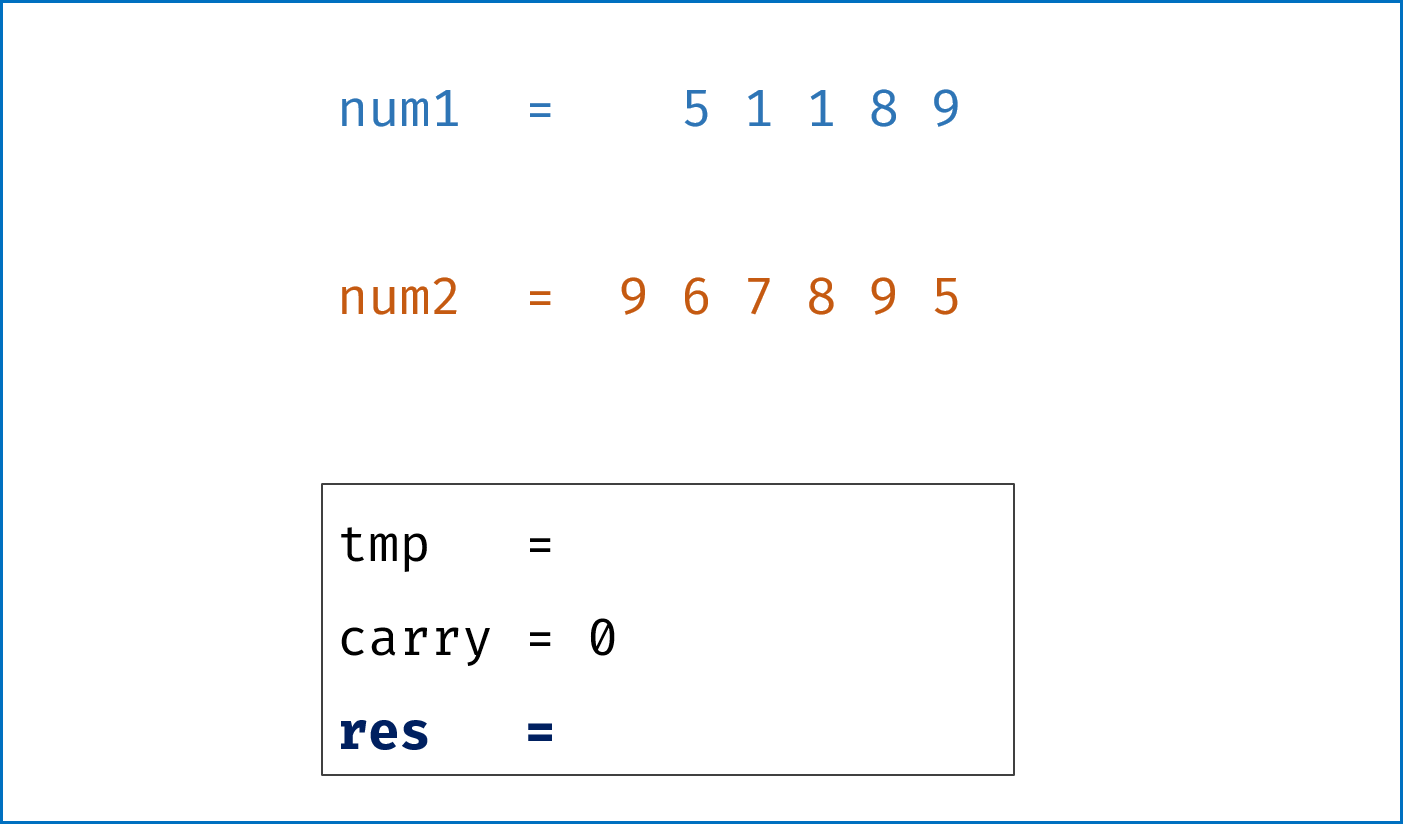 ,
,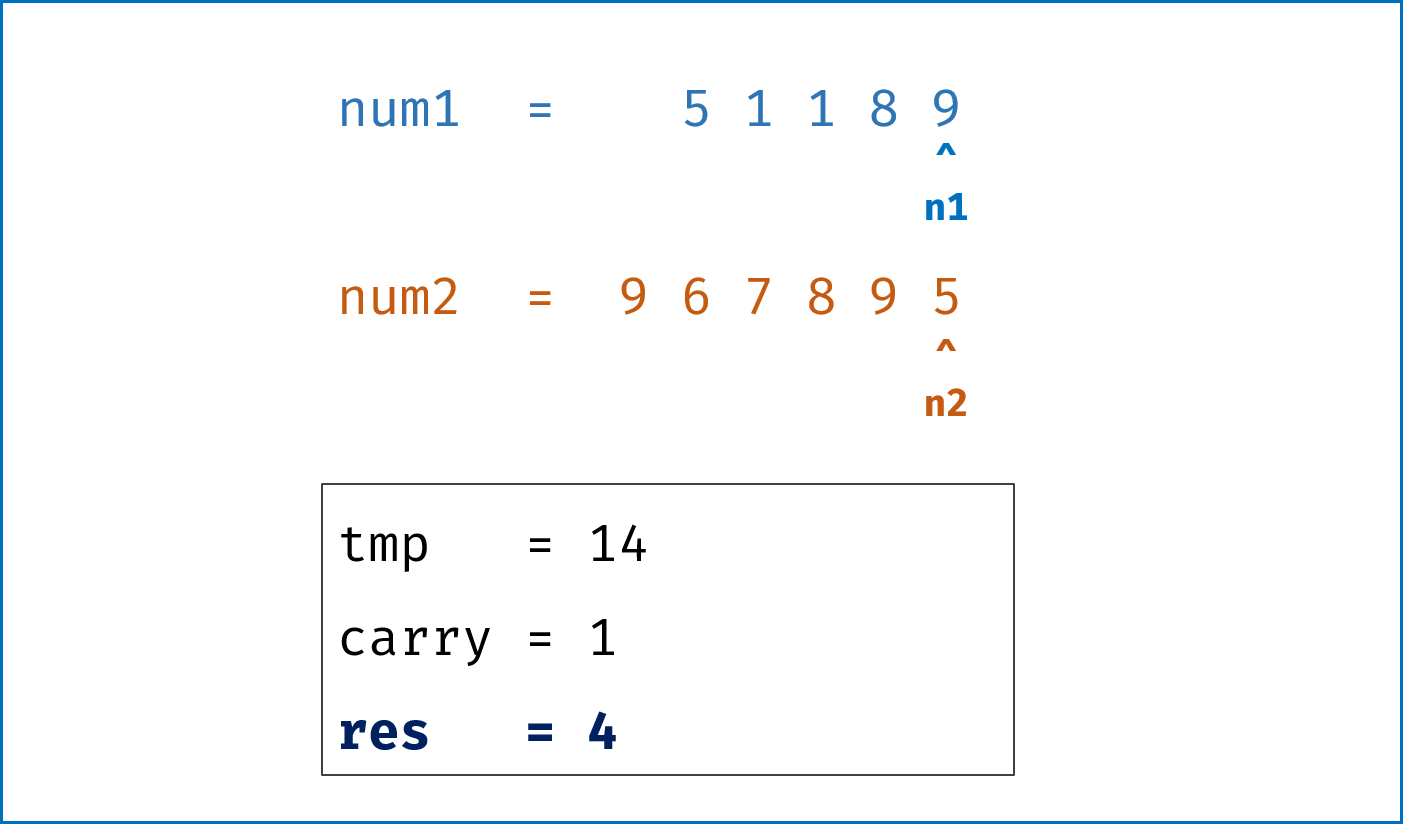 ,
,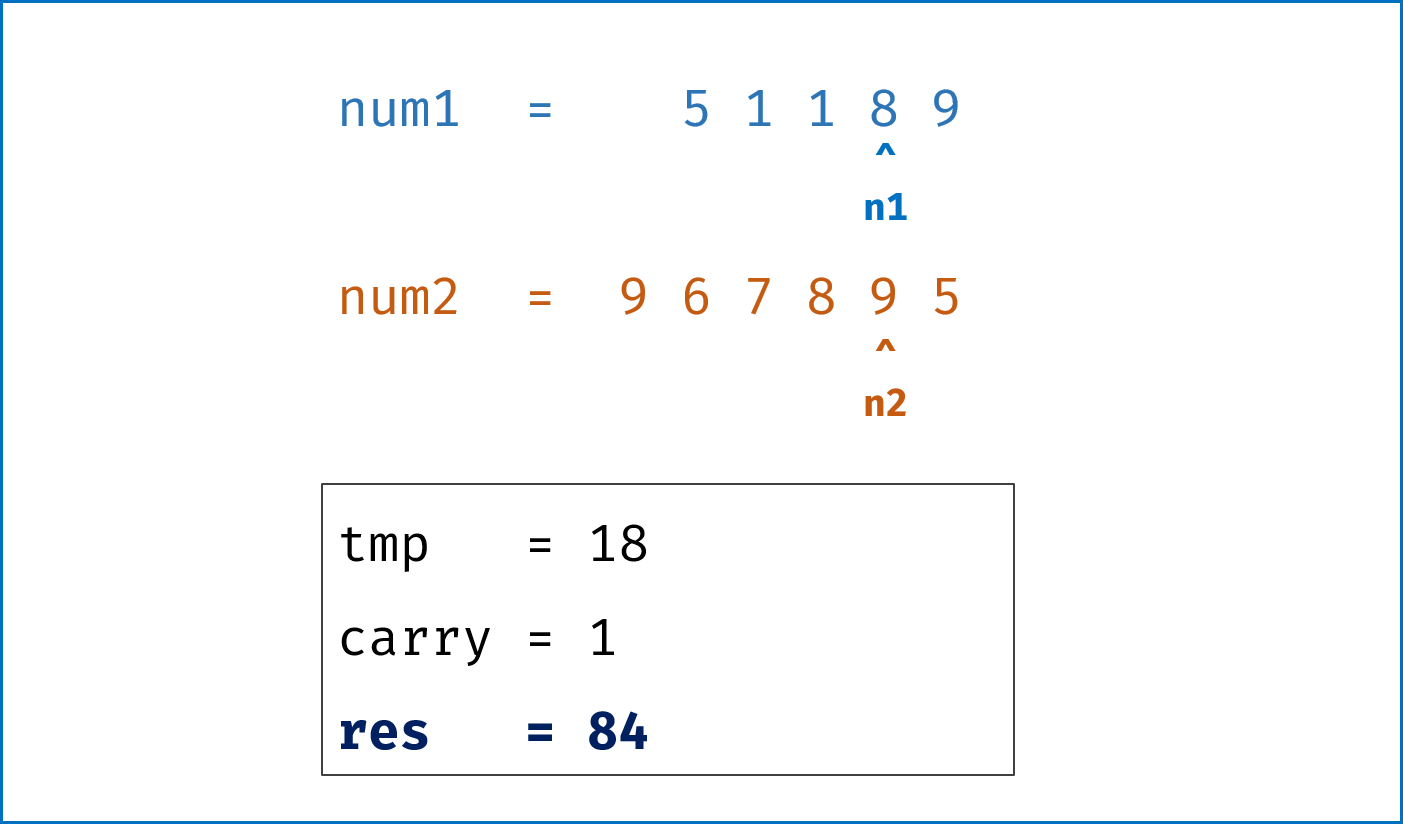 ,
,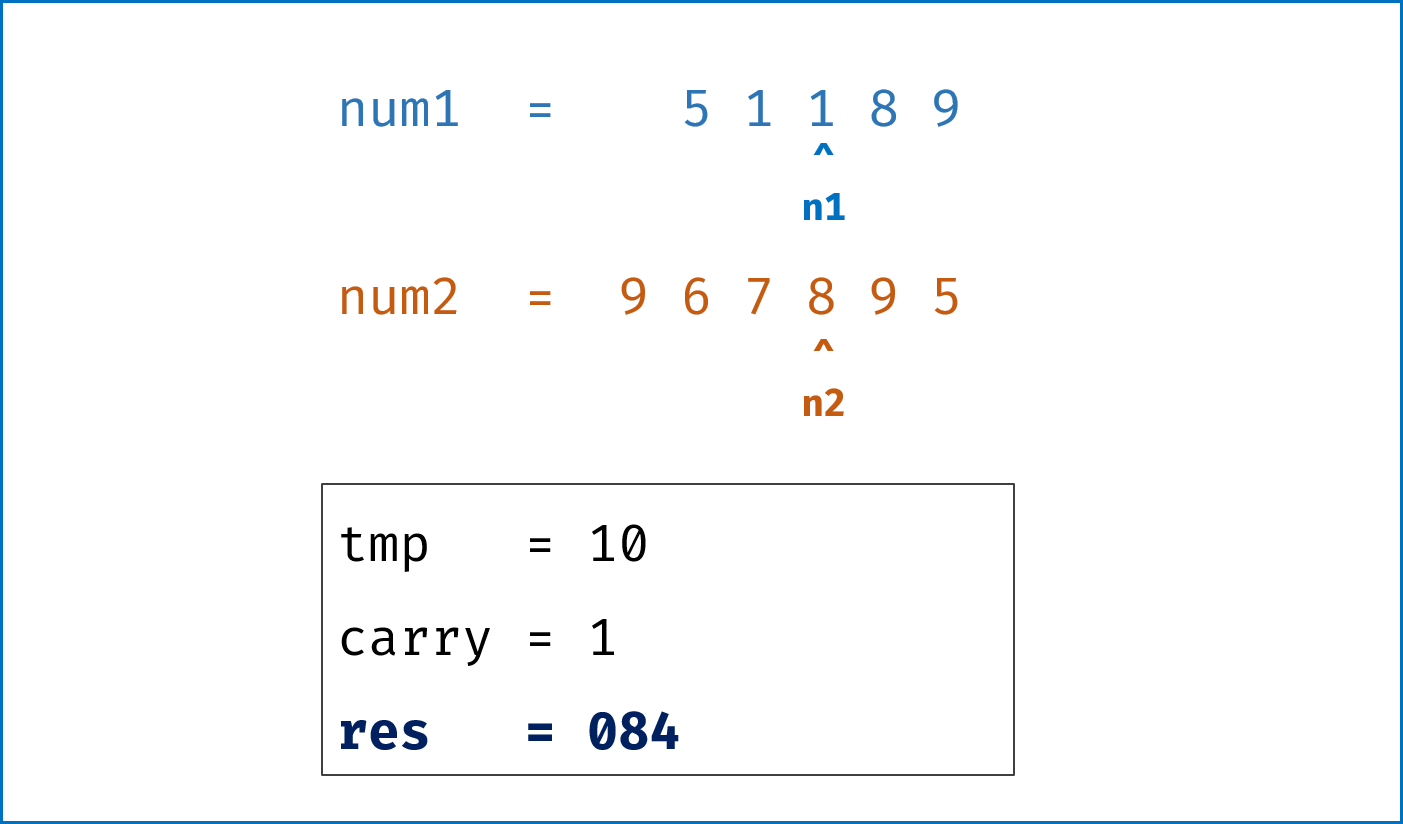 ,
,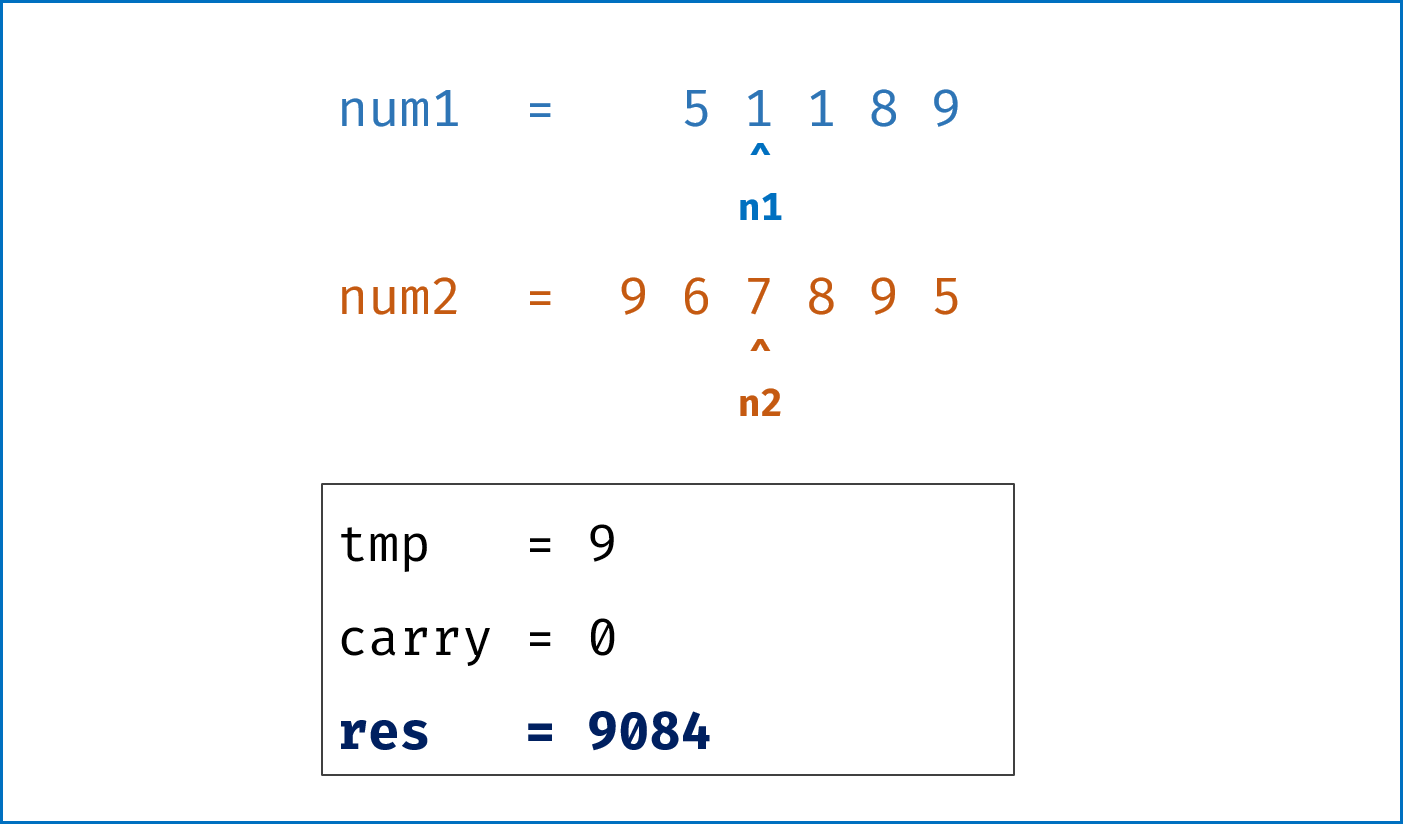 ,
,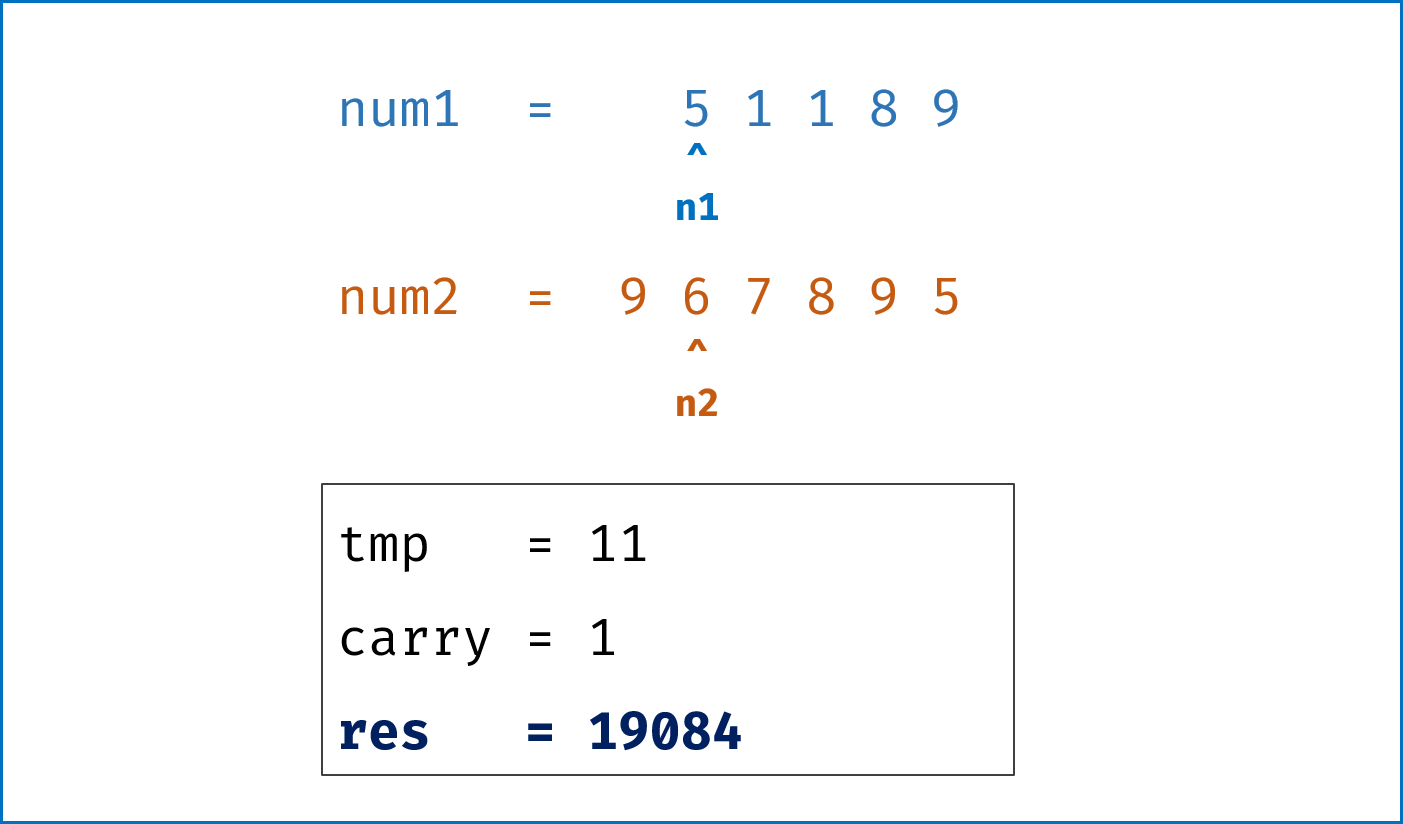 ,
,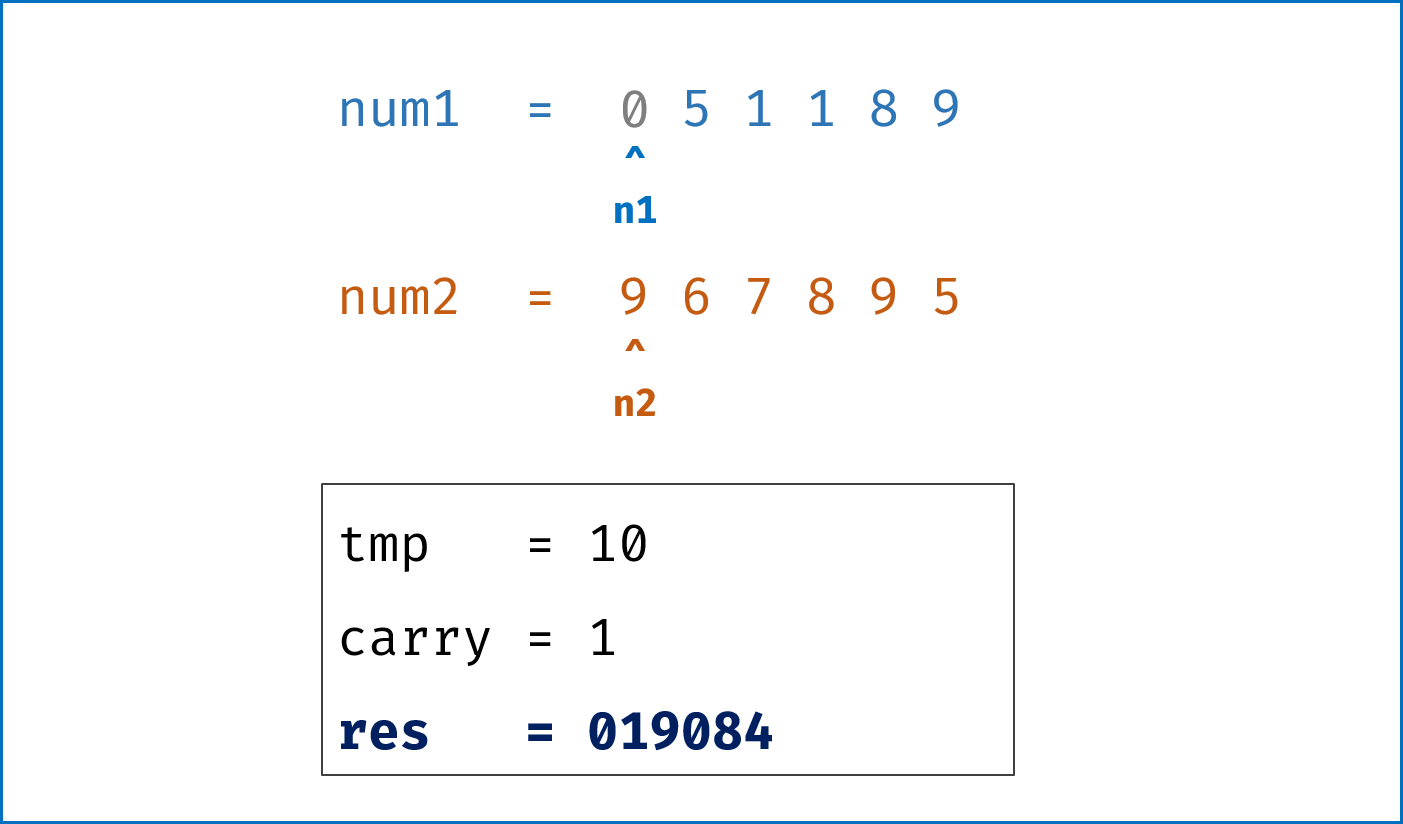 ,
,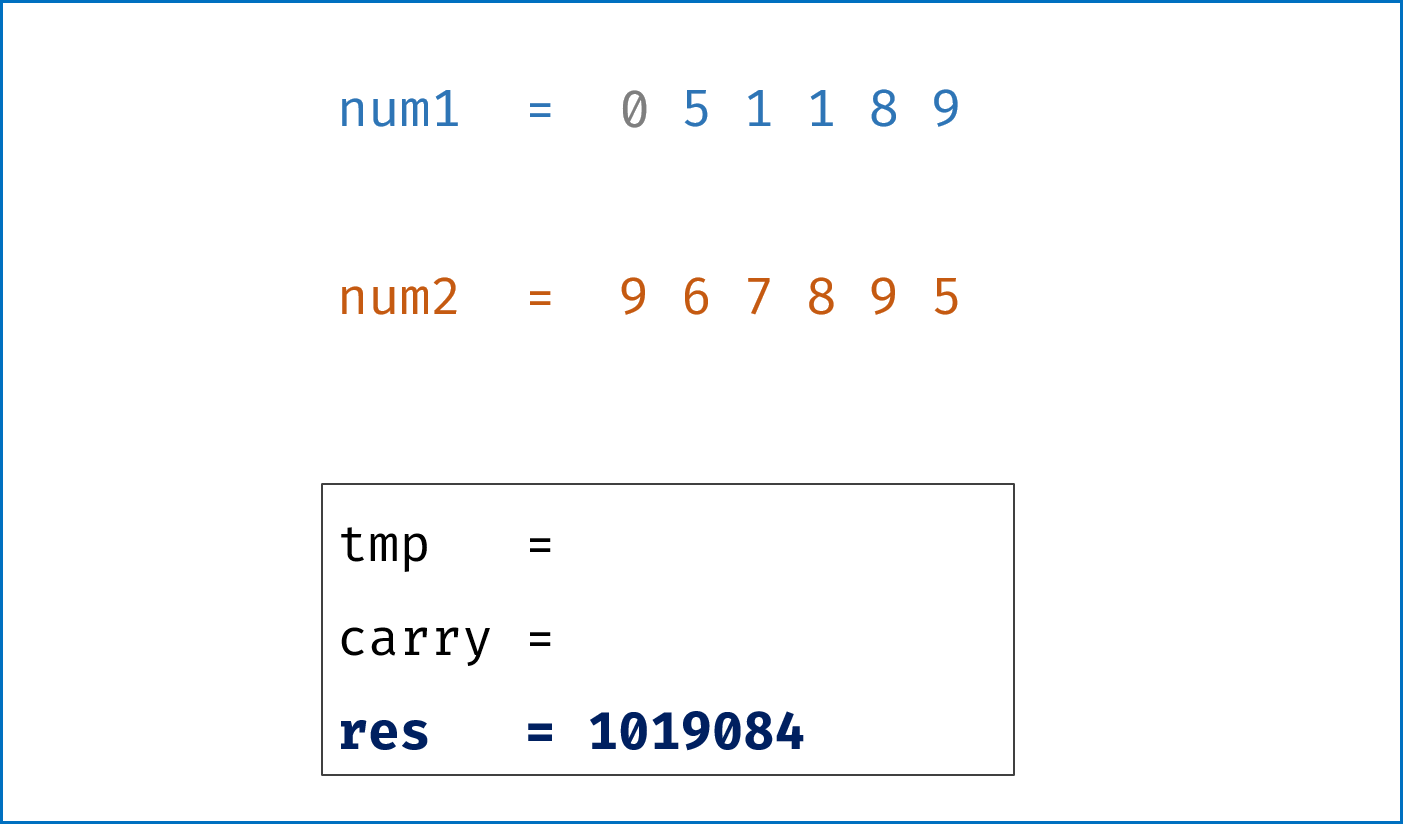 >
>
代码:
Python
class Solution:
def addStrings(self, num1: str, num2: str) -> str:
res = ""
i, j, carry = len(num1) - 1, len(num2) - 1, 0
while i >= 0 or j >= 0:
n1 = int(num1[i]) if i >= 0 else 0
n2 = int(num2[j]) if j >= 0 else 0
tmp = n1 + n2 + carry
carry = tmp // 10
res = str(tmp % 10) + res
i, j = i - 1, j - 1
return "1" + res if carry else resJava
class Solution {
public String addStrings(String num1, String num2) {
StringBuilder res = new StringBuilder("");
int i = num1.length() - 1, j = num2.length() - 1, carry = 0;
while(i >= 0 || j >= 0){
int n1 = i >= 0 ? num1.charAt(i) - '0' : 0;
int n2 = j >= 0 ? num2.charAt(j) - '0' : 0;
int tmp = n1 + n2 + carry;
carry = tmp / 10;
res.append(tmp % 10);
i--; j--;
}
if(carry == 1) res.append(1);
return res.reverse().toString();
}
}